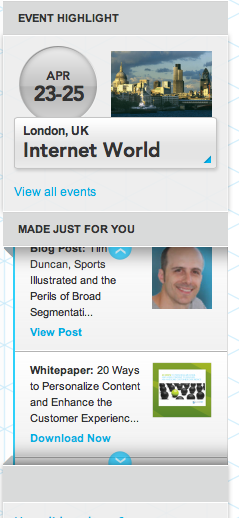Recently I did something very unusual. I gave my full attention to some content.
I know, amazing right? It sounds a strange thing to say, but I've come to realise that for most of my waking hours I can't go 10 minutes without checking social media, "second screening" (or, worse still, "third screening") or flicking refresh on my iPhone to check my email.
But, for once, I decided to check out of the digital firehose and focus. OK, so it happened to be music related. I'm an avid music fan and have 13,341 (i checked) songs in iTunes. And in this age of ADD, for most of my recent purchases I (sometimes) couldn't name the artist, (most of the time) couldn't name the track and (definitely) couldn't tell you the album name. But this time was different. It was the release of the new album "Immunity" by the London-based experimental electronic musician Jon Hopkins. Someone whom I admire a lot and, to use a marketing term, has a lot of "share of mind" with me.
So on my daily train commute I put away my phone(s), kept my Kindle shut and just listened. And very enjoyable it was too!
But it did raise the question that in my professional life, how many of my target audience lavish such attention on the content I'm producing? It's said the average consumer is exposed to upwards of 30,000 marketing messages a day - on their way in to work, on radio/TV, in their email inbox, online and in social media. That's an amazing amount of noise to compete with, and no surprise that Fournaise Group estimate that the average consumer attention span is now 4 seconds.
And don't think this is just a B2C problem. I was recently speaking to someone at technology research firm Forrester who told me that their analysts have to cover at anywhere between 100 and 1,000 vendors. And of course, as human beings, they're doing well to know 12-15. Which poses "interesting" challenges for us vendors who want to be known in our respective sectors.
So our fight as marketers, whether its reaching through the 30,000 to get to our customers or making the final 12-15 of an analyst, is in getting attention.
So how do we do it? This is what I think:
- Stop: thinking that people care about your products as much as you do. Start: appreciating the attention game & really honing your messaging skills.
- Stop: believing that people have the time to read, re-read and digest deep content. Start: thinking like an entertainment brand, and produce engaging, stimulating, even amusing bite size chunks of content.
- Stop: spraying & praying, bombarding your database with emails timed to when it's convenient for you. Start: building behaviour-triggered messages, that are relevant to the individual and timed to when its best for them.
The solution is clear: marketing automation + content marketing are powerful forces in the fight for attention. Get them right, and you may be my next Jon Hopkins. Get ithem wrong and I won't even remember your name. On which note, its time for the new Boards of Canada album.
Photo credit: http://foxgotbass.com/jon-hopkins/














